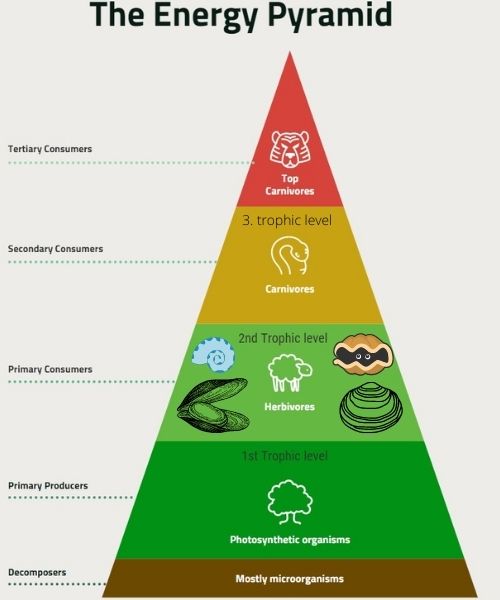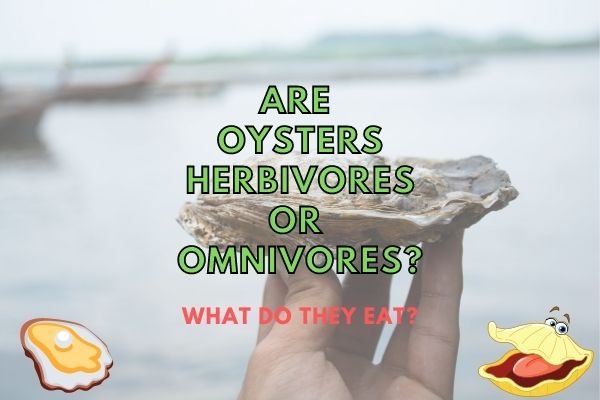Oysters are filter-feeding herbivores that live in marine habitats. They play an important role in the ecosystem by filtering large amounts of water and removing algae, plankton, and debris. As a result, oysters help to keep the water clean and improve water quality.
Oysters are classified as herbivores because they primarily eat plant material that they filter out of the sea water around them. Although they may occasionally ingest microscopic animals like zooplankton, animals are not a major part of their diet.
Oysters are primary consumers since they consume algae and other plant material. Oysters are mostly sedentary creatures that attach themselves to hard surfaces using their strong muscular foot.
Habitat and Diet of Oysters
Oysters are found in marine habitats, such as estuaries, bays, and reefs. They can also be found in brackish waters, which are a mix of fresh water and salt water.
There are over 100 species of oysters, but the most common are the Eastern oyster (Crassostrea virginica) and the Pacific oyster (Crassostrea gigas).
Oysters, like mussels and clams are filter feeders and their diet consists of algae, plankton, and debris. They use their gills to filter food from the water and they can eat up to 50 gallons of water per day!
Oysters mainly eat:
- Algae
- Phytoplankton
- Zooplankton (like diatoms)
- Debris (animal and plant derived)

Feeding Habits of Oysters
Oysters are sedentary animals, meaning they do not move around much. They attach themselves to hard surfaces using a strong muscle called the adductor muscle.
Once attached, they open their shells slightly to allow water to flow through them. As the water flows through their gills, they filter out food particles.
How much do oysters eat in a day?
To calculate this, we need to have a few numbers in place.
Let’s take two examples – a large and a smaller mussel.
Where small freshwater mussels (max 2″ long) will filter through approximately 4 gallons of water per day, a larger oysters will filter trough 50 gallons. While strictly speaking not clams, oysters have been well studied so these numbers are quite reliable.
The amount of solids in seawater is quite little and depends of course on the location, depths, temperature, etc.
However, as a starting point a study on the organic content of seawater estimates an organic particle content of around 100 grams per cubic metre, most of which is estimated to consist of the organic particles and plankton that clams eat.
That is, around 100g “oyster food” per 264 gallons (1000L/3.78) of seawater.
So a sa larger oyster would be able to eat maximally (50/264)*100 = 19 grams (0.04 lbs) of organic matter from seawater in a day.
It should be noted that even the most efficient of filter feeders rarely utilize more than 80% of the digestible matter in the water, so these numbers are likely in the optimistic end, but hopefully you get the idea!
By filtering particles from water, oysters play an important role in cleaning up pollution and particles in water environments. Watch the video below to see how effective they are!
Are Oysters Carnivores, Herbivores or Omnivores?
Oysters are herbivores because they only eat plants and algae.
However, they also consume small amounts of animal matter from debris and as zooplankton.
So one can also argue that some oysters are omnivores because they will also eat plankton that essentially consist of small animals.
Are Oysters Producers, Consumers or Decomposers?
Oysters are consumers because they eat other living organisms and they are not able to produce their own energy. Only plants as well as some bacteria and protozoa are actual producers.
However, algae growing in association with oysters almost represent a symbiotic relationship (like lichen) that could lead to the oyster being fed more directly by the produce of algae.
Are Oysters Decomposers?
No. Because the oyster’s diet does not consist entirely of dead or decaying matter they are not considered decomposers or detritivores like some other marine animals are.
However, they do filter out dead organic matter from the water, which means that oysters are helping the decomposition of organic matter to some extent.
In fact, like mussels and clams, oysters are quite effective at clearing water from impurities, which is one of their important roles in any aquatic ecosystem.
What Type of Consumer is an Oyster?
Oysters are primary consumers because, like all other herbivores, because they mainly eat plants or algae.
Generally, herbivores are primary consumers, omnivores secondary consumers and predators are tertiary consumers.
Where are Oysters in the Food Chain?
Oysters are the second trophic level in the energy pyramid because they are herbivores and therefore primary consumers.

Because they eat mainly plants, algae, bacteria and some amounts of microscopic crustaceans (zooplankton) which place them at the 2nd and 3rd trophic levels.
Are Oysters Autotrophs or Heterotrophs?
Oysters are heterotrophs because they eat other living organisms. Practically no animals are autotrophic because animals do not get their energy directly from the sun like plants do. That is, animals like oysters cannot make their own energy!
What Animals Prey on Oysters?
Oysters are food for a variety of animals including birds, fish, crabs, starfish and humans.
We, humans, love to hunt them for their meat and pearls!
Oysters are also a very important part of human culture, especially in the Mediterranean region.
They are a common ingredient in Mediterranean food and are eaten in many different forms. They are eaten raw or in different types of dishes and are used to make shellfish sauce, fish sauce and oyster sauce.
They are also used in the industrial production of pearls!
Conclusion
In this blog post we have looked at the diet of a herbivore, the oyster.
Oysters are a group of bivalves that are found in all oceans and are very important to the marine food chain. They are filter feeders, which means they filter the water as they feed.
They are also important grazers, eating algae and plankton, although mostly microscopic ones.
Oysters are also very important to the environment because they are a part of the recycling process. They filter out the debris and waste that is in the water, and this is then eaten by other creatures.
Because oysters are very important for the environment, it is important to protect them and their habitats.
They are very vulnerable to pollution and we need to be very careful of the amount of waste that goes into the oceans so their populations do not decline more than they have already done!
I hope you enjoyed reading this post, and if you want to read more about oysters check out my other posts on this site.




